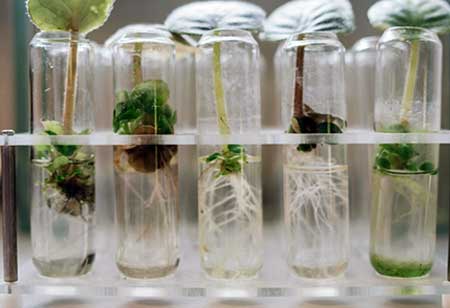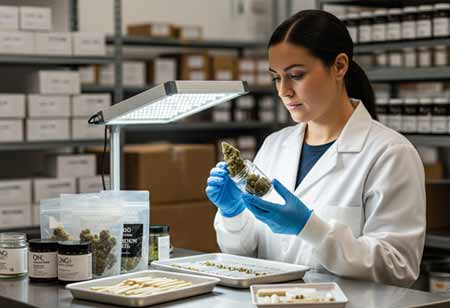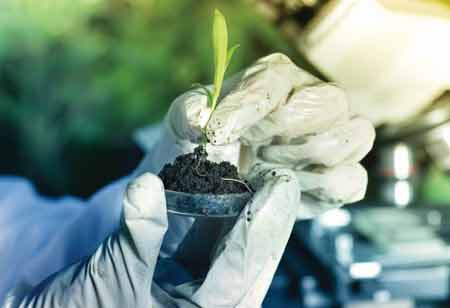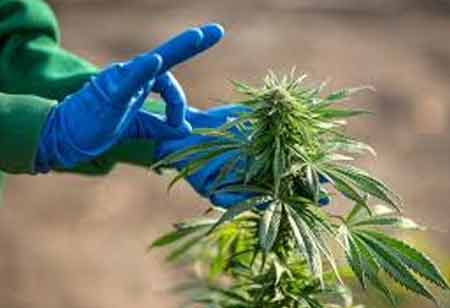Thank you for Subscribing to Cannabis Business Insights Weekly Brief
The Rise of Greenhouse Microproducers: Craft Cannabis in a Controlled Climate
Greenhouse microproducers are reshaping the craft cannabis industry by combining tradition with technology, emphasizing quality and consumer transparency to create premium, artisanal products.

By
Cannabis Business Insights | Friday, October 17, 2025
Stay ahead of the industry with exclusive feature stories on the top companies, expert insights and the latest news delivered straight to your inbox. Subscribe today.
Amid the global cannabis industry, greenhouse microproducers are emerging from the shadow of industrial-scale cultivation, forging a new middle ground between sprawling outdoor farms and energy-intensive indoor warehouses. This burgeoning segment represents a sophisticated fusion of agricultural tradition and cutting-edge technology, catering to a discerning consumer base that values quality, consistency, and craftsmanship above all else. This is the state of craft cannabis in a controlled climate—a movement driven by precision, passion, and the pursuit of horticultural perfection.
The Evolution of Consumer Palates
The ascent of the greenhouse microproducer is inextricably linked to the evolution of the cannabis consumer. Paralleling trends seen in the coffee, wine, and craft beer industries, a significant portion of the market has graduated from prioritizing sheer potency or low cost to seeking nuanced and premium experiences. Today’s connoisseur is educated, curious, and invested in the story behind the product. They inquire about genetics, terpene profiles, cultivation methods, and curing processes.
This demand for transparency and artisanal quality has created the ideal market conditions for small-batch cultivators to thrive. Microproducers are positioned not as mass-market suppliers, but as an answer to this call for distinction. They operate on a scale that allows for an obsessive focus on detail, from genetic selection to the final hand-trim. Their philosophy is simple yet profound: cannabis is a complex botanical that, when cultivated with expertise and care, can yield an incredible diversity of aromas, flavors, and effects. It is this philosophy that resonates with the modern consumer and fuels the growth of the craft sector.
The Greenhouse: A Symphony of Nature and Nurture
At the heart of this movement is the strategic choice of the greenhouse as the ideal cultivation environment. This decision is not a compromise between indoor and outdoor methods but a deliberate selection of a superior hybrid model. Greenhouses harness the most powerful, full-spectrum, and cost-effective light source available: the sun. This natural solar energy is crucial for promoting the robust synthesis of cannabinoids and, most importantly, the complex terpenes that define a strain’s unique character.
However, unlike an open field, the greenhouse provides a protective shell where nature’s power can be managed. This is where technology transforms cultivation into an art form. Modern greenhouse facilities are marvels of environmental engineering, equipped with systems that offer precise control over every critical variable. Automated light deprivation curtains can manipulate photoperiods to trigger and manage flowering cycles with pinpoint accuracy, regardless of the season. Supplemental LED or HPS lighting can augment sunlight on overcast days, ensuring the plants receive an optimal daily light integral (DLI).
Advanced climate control systems continuously monitor and adjust temperature, humidity, and airflow. The introduction of supplemental carbon dioxide can be precisely dosed to boost photosynthesis and accelerate healthy growth. Irrigation and fertigation systems deliver water and customized nutrient recipes directly to the root zone, maximizing uptake and minimizing waste. This level of control allows microproducers to create the perfect microclimate for specific genetics, guiding the plant to express its full potential in a way that is consistent, repeatable, and of the highest quality.
Cultivating Distinction: Quality Over Quantity
The operational model of a microproducer is fundamentally geared towards quality over quantity. With a smaller canopy to manage, cultivators can dedicate unparalleled attention to each plant. This hands-on approach begins with a deep commitment to genetic curation. Rather than planting ubiquitous commercial strains, these artisans often engage in extensive pheno-hunting, searching for rare and unique cultivars that offer exceptional terpene profiles and novel effects. They become stewards of genetic diversity, preserving and perfecting lineages that might be overlooked in a large-scale commercial setting.
This approach extends throughout the plant’s life cycle. Techniques like selective pruning, trellising, and topping are performed with a level of care that is simply not feasible in a massive operation. The result is a plant structure that optimizes light penetration and airflow, leading to more uniform flower development and a reduced risk of pathogens.
Nowhere is this artisanal ethos more apparent than in the post-harvest process. While industrial producers often rely on machine trimming and rapid drying to meet volume demands, microproducers champion the slow and steady methods that preserve the flower’s delicate compounds. Hand-trimming ensures that trichomes remain intact and the flower’s structure is respected. A long, slow cure in a carefully controlled environment allows for the breakdown of chlorophyll and sugars, resulting in a smoother consumption experience and a more pronounced and complex bouquet of aromas and flavors.
Greenhouse microproducers are successfully carving out a defensible and highly valuable niche in the premium tier of the market. They are not competing with value brands on price; they are setting a new standard for excellence. Their brand identity is built on storytelling, transparency, and a direct connection with the consumer. By highlighting their unique genetics, sustainable greenhouse practices, and hands-on cultivation methods, they build a loyal following among those who see cannabis as a connoisseur product.
The future for this sector is exceptionally bright. As the global cannabis market continues to expand and diversify, the demand for high-end, differentiated products will only grow. Technological advancements in greenhouse automation, environmental sensors, and data analytics will further empower small-scale growers, enabling even greater levels of precision and efficiency. These producers are not just participants in the industry; they are its tastemakers. By consistently delivering superior products and educating consumers on the nuances of quality, greenhouse microproducers are elevating standards, shaping palates, and defining the future of craft cannabis.






